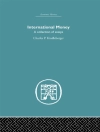The title of this book has a double meaning: on the one hand, it deals with two very different societies both of which made iron in the early modern period. On the other hand, iron ‘made’ these societies: the needs of iron production and the resistance to these demands from local peasant communities gave the societies a special kind of cohesion and rationality.
This volume presents the findings of a joint team of Swedish and Russian scholars examining the social organization of work in early modern iron industry and their respective societies. The comparison was carried out against the backdrop of the international discussion on proto-industrialization, its prerequisites and consequences. There has, however, been a certain bias in much of that debate, the focus being mainly on Western Europe, particularly on Britain, and on textile trades. This book offers an important contribution to the debate in that it widens the perspective by discussing Northern and Eastern Europe and by studying the iron industry. More particularly it examines actual production processes, the organization of work, social conflict, questions of ownership and its evolution, as well as the diffusion and organization of technical knowledge. The comparative approach is consistently applied throughout, with each chapter closely integrating the results relating to the two selected geographical areas, thus showing ways of solving some of the problems arising from comparative history.
Tabla de materias
List of Illustrations
Preface
Acknowledgements
List of Abbreviations
PART I
Chapter 1. Introduction: Swedish and Russian Iron-Making As Forms of Early Industry
Maria Ågren
Chapter 2. Iron-Making in Peasant Communities
Maria Sjöberg with Anton Tomilov
Chapter 3. The Social Organisation of Work at Mines, Furnaces and Forges
Anders Florén and Göran Rydén with Ludmila Dashkevich, D.V. Gavrilov and Sergei Ustiantsev
PART II: INTEGRATION OF THE AGRARIAN ENVIRONMENT IN IRON PRODUCTION
Chapter 4. The Social Organisation of Peasant Work
Maria Ågren with Nina Minenko and Igor Poberezhnikov
Chapter 5. Charcoal: Production and Transport
Maths Isacson with Igor Poberezhnikov
Chapter 6. Households, Families and Iron-Making
Göran Rydén with Svetlana Golikova
PART III: THE INSTITUTIONAL ENVIRONMENT AND HOW IT CHANGED
Chapter 7. Community and Property
Maria Ågren with Vladimir Zhelezkin and Vladimir Shkerin
Chapter 8. Knowledge: Its Transfer and Reproduction in Occupations
Rolf Torstendahl with Ludmila Dashkevich and Sergei Ustiantsev
Chapter 9. Iron-Making Societies: The Development of the Iron Industry in Sweden and Russia, 1600–1900
Anders Florén
Glossary
Notes on Contributors
Bibliography
Index
Sobre el autor
Maria Ågren teaches in the Department of History at Uppsala University












